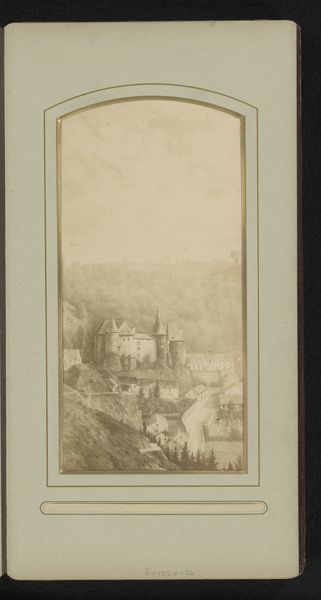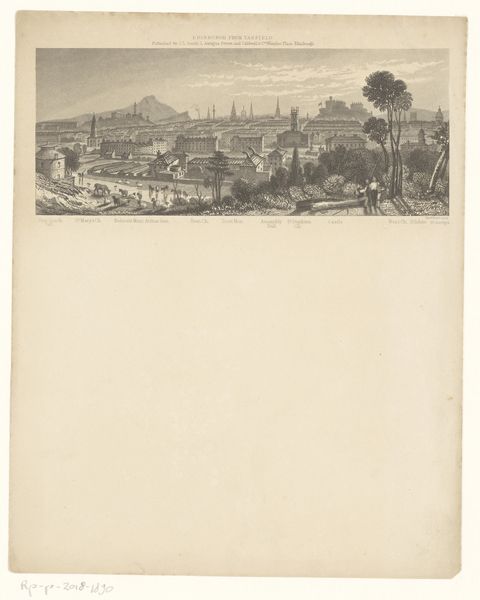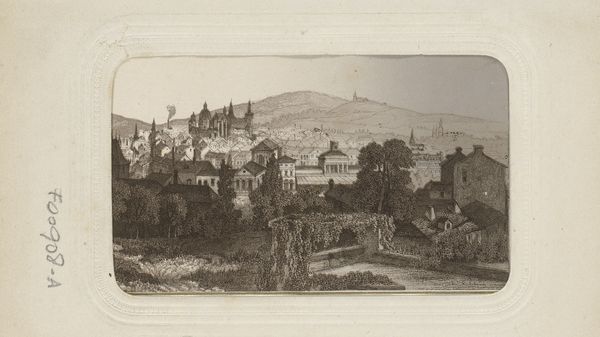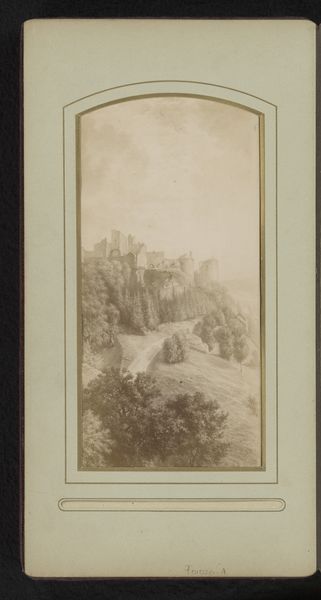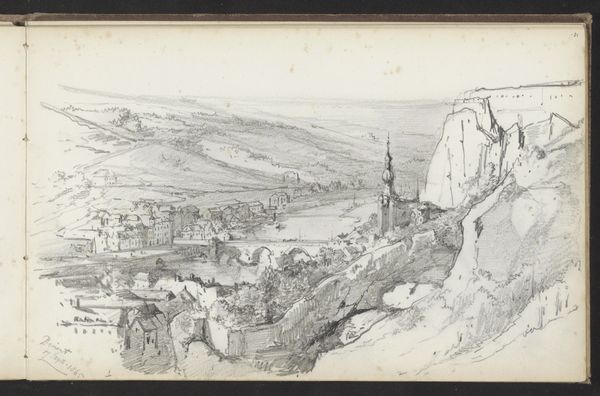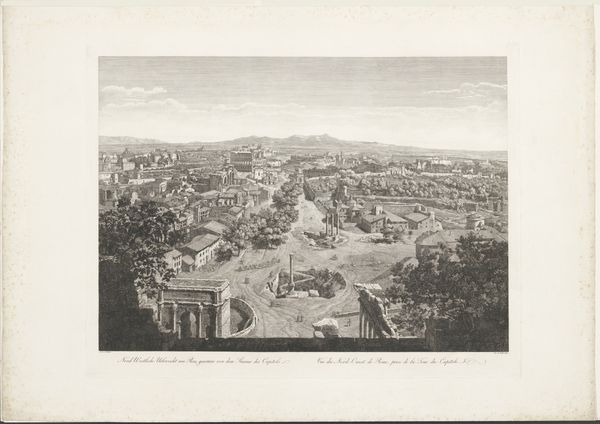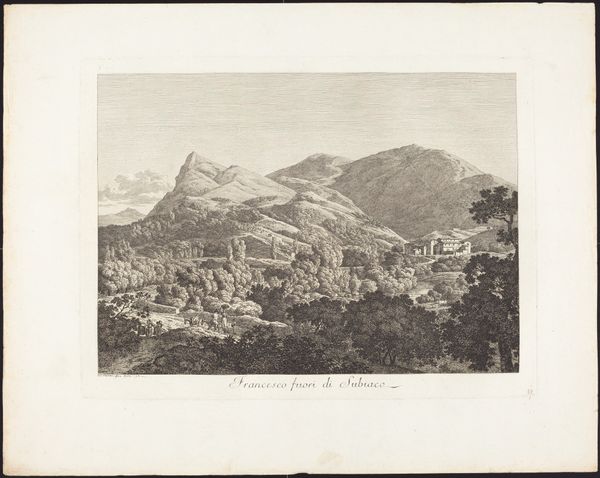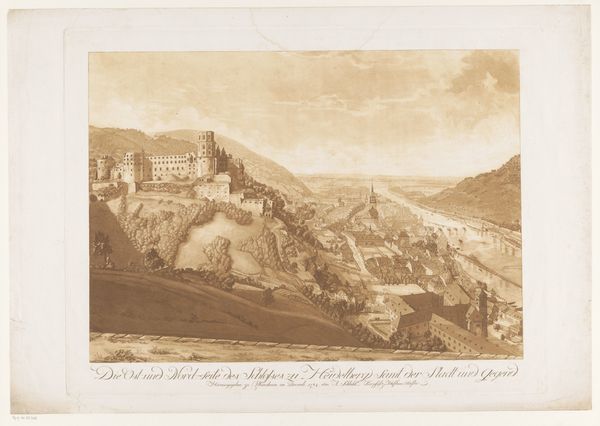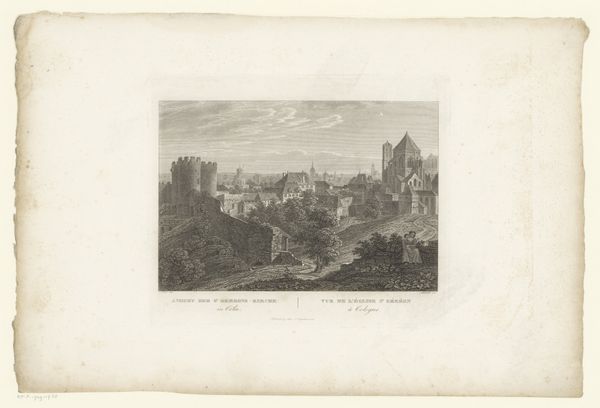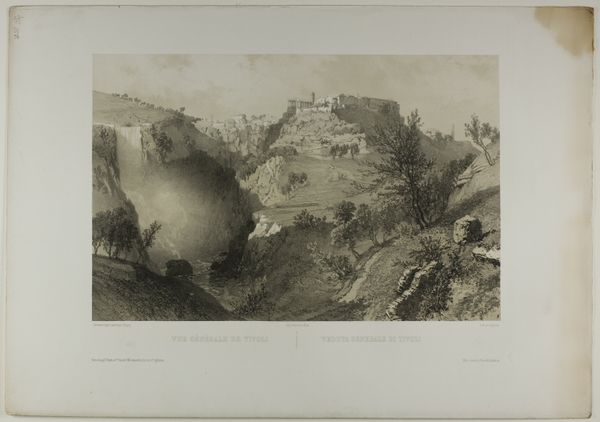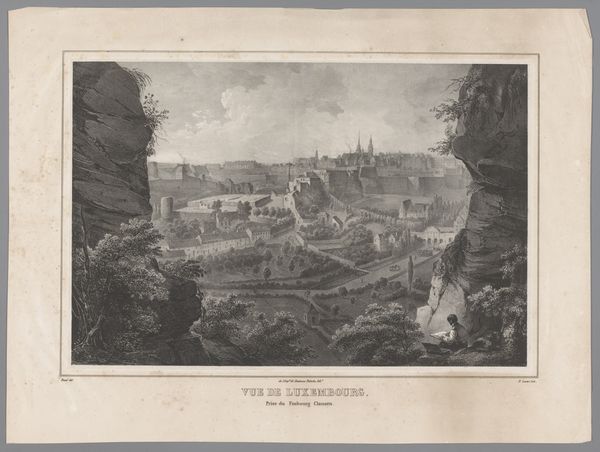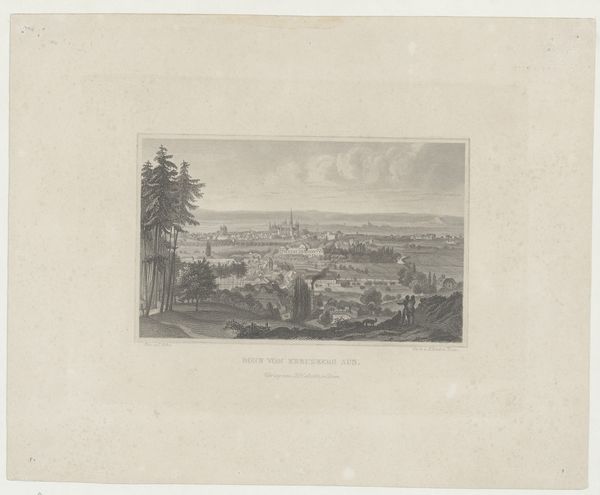
Fotoreproductie van een prent van de ruïne van een kasteel op een heuvel en daarvoor een dorp of stad before 1889
0:00
0:00
print, photography, gelatin-silver-print
#
pictorialism
# print
#
landscape
#
house
#
photography
#
framed image
#
mountain
#
gelatin-silver-print
#
cityscape
Dimensions: height 188 mm, width 92 mm
Copyright: Rijks Museum: Open Domain
Editor: This is a photo reproduction of a print depicting a castle ruin overlooking a town, dating from before 1889. It's rendered in gelatin silver, giving it a sepia tone that makes the scene feel distant, almost dreamlike. What do you see in this piece? Curator: It makes me think about power and its representation through architecture. We have this imposing castle, a symbol of authority, physically elevated above the town. But it's in ruins, a visual testament to the transience of power. How does that juxtaposition resonate, given the social stratification inherent in such a landscape? Editor: It's like a history lesson in stone. The castle *was* the power, but the town seems to be going about its business, almost indifferent to the decaying symbol above them. Is that something photographers and printmakers would have been consciously exploring at that time? Curator: Absolutely. Think about the social changes happening then—the rise of industrialization, the questioning of aristocracy. Images like these could subtly critique established hierarchies. It also brings up questions around land ownership and access to resources. Who gets to live where, and why? Who benefits from the labour in the town versus who resides in the castle, or rather its ruins? Editor: So, this image is not just a pretty landscape; it's loaded with social commentary. I’m seeing now that landscape is often deeply interwoven with social power dynamics, revealing underlying political tensions. Curator: Precisely. Art, even seemingly simple landscape photography, can offer potent insights into the socio-political landscape of its time. The gaze of the artist is never neutral, right? Editor: Definitely not! Thanks, I never would have thought of it in that way!
Comments
No comments
Be the first to comment and join the conversation on the ultimate creative platform.
